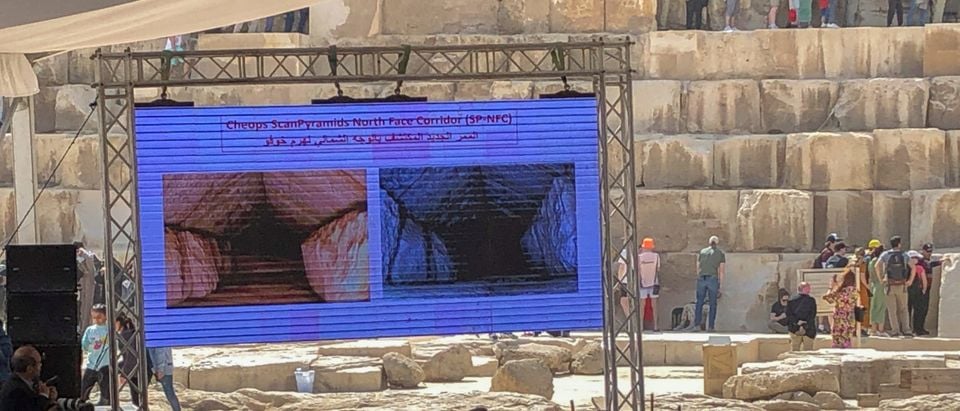Scientists uncovered a hidden nine-meter long corridor near the main entrance to the Great Pyramid of Giza, officials said Thursday.
The discovery was made as part of the Scan Pyramid project, which has been using non-invasive technology to study the structure since 2015, Reuters reported. Researchers used a mixture of infrared thermography, 3D simulations and endoscopes to explore inside of the structure, which is assumed to be 4,500-years-old (though the age of the Great Pyramid, and all others, is hotly contested).
Mostafa Waziri, who heads Egypt’s Supreme Council of Antiquities, said the corridor was presumably created to help redistribute the weight of the structure around the main entrance. Or it could be another currently undiscovered pathway to a different chamber or space within the pyramid.
Did Climate Change bring down an ancient Empire? https://t.co/HkEhHCeWvE
— Daily Caller (@DailyCaller) February 14, 2023
“We’re going to continue our scanning so we will see what we can do … to figure out what we can find out beneath it, or just by the end of this corridor,” he said of the discovery. Clearly this stunning find, eight after the project started, suggests there is much more to know about this enormous complex. (RELATED: Archaeologists Uncover Gold Leaf-Coated Mummy, Other Incredible Artifacts At Ancient Burial Site In Egypt)
Establishment archaeologists continue to believe that , Reuters cites the archeological consensus that the Great Pyramid was built as a tomb around 2560 B.C., during the reign of Pharaoh Khufu or Cheops. Other researchers, however, suggest the structure may have been something completely different, like a power plant.
There are still so many unknowns about the Great Pyramid and surrounding artifacts. Many researchers have hypothesized about how the Great Pyramid was built, but this knowledge is still largely lost to history.
As the Pyramid Scan project continues, we can only that more conclusive answers emerge about this forgotten chapter of human history.


